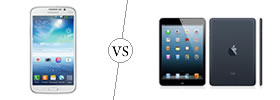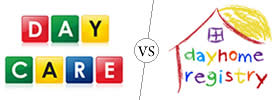Difference between Bipolar and ADHD
Key Difference: Bipolar disorder is a condition in which people experience extensive mood swings. A person may start of being happy and then go quickly to becoming sad or depressed. Attention deficit-hyperactivity disorder (ADHD) is a medical disorder that is characterized by excessive inattentiveness, hyperactivity and impulsiveness. It results in the patient not being able to focus, pay attention and sit still for longer periods of time.
Bipolar and Attention deficit-hyperactivity disorder (ADHD) are two of the most commonly diagnosed disorders. They are also the most common disorders among children and can often be seen from the age of 7 onwards. Bipolar and ADHD are often confused as they are similar in nature and because of similar symptoms. This also results in many people being commonly misdiagnosed with another disorder. However, bipolar and ADHD are often two different disorders and should be diagnosed and treated differently. Bipolar and ADHD can also co-exist in a person.
 Bipolar disorder is a condition in which people experience extensive mood swings. A person may start of being happy and then go quickly to becoming sad or depressed. These mood swings are very fast and can happen in a couple of minutes. Bipolar disorder is equally common in men and women between the ages of 15-25 and there is no exact reason for the cause of this disorder, though it has been attributed to life changing situations, medications, lack of sleep and recreational drug use.
Bipolar disorder is a condition in which people experience extensive mood swings. A person may start of being happy and then go quickly to becoming sad or depressed. These mood swings are very fast and can happen in a couple of minutes. Bipolar disorder is equally common in men and women between the ages of 15-25 and there is no exact reason for the cause of this disorder, though it has been attributed to life changing situations, medications, lack of sleep and recreational drug use.
There are three types of bipolar disorder: Bipolar Disorder type I, Bipolar Disorder type II and cyclothymia. Bipolar type I is a disorder where people at least one manic episode and periods of major depression. This type of disorder was previously known as maniac depression. Type II have never suffered a full mania, however they experience high energy levels and impulsiveness, causing to be happy and really excited (known as hypomania) at one time and sad and depressed a little while later. Cyclothymia is a mild form of bipolar disorder in which a person only experiences small mood swings which are not that dangerous. People with this form alternate between hypomania and mild depression.
The symptoms for bipolar disorder may last from minutes to days to months and include easy distraction, feeling of sleeplessness, poor judgment, loss of temper, reckless behavior or lack of self control (drug use, dangerous behavior, reckless driving, etc), very elevated mood (hyperactive nature, increased energy, etc), very involved in activities, easily upset or agitated, loss of appetite, fatigue or lack of energy, difficulty concentrating, loss of pleasure in activities, low self-esteem, suicidal thoughts, etc. These symptoms take more prominence in bipolar disorder type I and are present with a lesser intensity in the type II. CBT, parental anxiety management, hypnotherapy treatments, herbal treatments, caffeine elimination and combined treatments are few treatments that have been proving effective in treating bipolar disorders.

Attention deficit-hyperactivity disorder (ADHD) is a medical disorder that is characterized by excessive inattentiveness, hyperactivity and impulsiveness. It results in the patient not being able to focus, pay attention and sit still for longer periods of time. The person may also have trouble listening, watching, reading and studying. These are often visible in children as little as 7 and can continue to be there even when the child grows up. ADHD is one of the most common disorders that is studied and diagnosed in children, affecting approximately 3-5% children in the world. The disorder is more prone to affect boys than girls.
There are various different causes for ADHD including genetics, diet and the social and physical environments. ADHD occurs in a person when neurotransmitters are less active in the area of the brain that controls attention. This causes the person to have a short attention span. ADHD has been considered as highly hereditary and is proven to occur more in patients that have a history of ADHD in their family. Alcohol and cigarette intake during pregnancy have also be linked to development of ADHD. Many researchers have also been trying to link ADHD to evolution, where ADHD occurs in a patient favored by natural selection. Pediatric Allergist, Benjamin Feingold found in 1973 that certain food colorings can contain additives that may affect children’s behavior. Though there has been evidence that some food coloring may make children hyperactive, the link between food coloring and ADHD is still unclear.
Diagnostic and Statistical Manual of Mental Disorders (DSM-IV), 4th edition classifies ADHD into three subtypes: Predominantly inattentive (ADHD-PI or ADHD-I), Predominantely hyperactive-impulsive (ADHD-HI or ADHD-H), or the two combined (ADHD-C). Patients with the first subtype have a difficulty focusing on one task at one time. They exhibit symptoms such as being easily distracted, forgetful, daydreaming, disorganization, poor concentration, and difficulty completing tasks. Patients with the second subtype have a difficulty sitting in one place and are often impulsive and rash. They exhibit symptoms such as excessive fidgetiness and restlessness, hyperactivity, difficulty waiting and remaining seated, immature behavior; destructive behaviors may also be present. The third subtype is actually a combination of the first two subtypes and the person exhibits symptoms of both.
ADHD is not curable but it is manageable to the point where it does not disrupt the person’s daily activities. Treatment includes a combination of positive behavior support (PBS), life-style changes, counseling, and medication. The person must attend therapy including behavior therapy, cognitive behavioral therapy (CBT), interpersonal psychotherapy (IPT), family therapy, etc. Stimulants is commonly not given to children, but could be prescribed to adults to help manage the disorder.
Bipolar patients often are more aggressive and have a problem with authority, while ADHD patients cannot help themselves from getting distracted. Bipolar patients will also seek out ways to release aggression and anger, i.e. looking for fights, getting into arguments and may even encourage an argument. However, ADHD patients are often more mellow and are even quick to forget anger. They can’t seem to keep their focus on anger for longer periods of time and get distracted to do other things. Though bipolar and ADHD often seem similar in nature, they are quite different. This is why it is always best to get a proper diagnosis by a medical professional.
|
|
Bipolar |
ADHD |
|
Definition |
Bipolar is a psychotic disorder during which the patient exhibits excessive mood swings such as mania and depression. |
ADHD is characterized by excessive inattentiveness, hyperactivity and impulsiveness. |
|
Symptoms |
Symptoms differ depending on the person. However, constant and excessive mood swings are associated with bipolar. |
Inattention, hyperactivity, disruptive behavior, impulsivity, academic difficulties, daydreamers, struggle to follow instructions, fidgety, talkative, etc. |
|
Causes |
Bipolar disorder has been attributed to genetics, physiological and environmental factors. |
Genetics, diet and the social and physical environments. |
|
Types |
Bipolar I disorder, Bipolar II disorder, Cyclothymia and Bipolar disorder NOS. |
Predominantly inattentive (ADHD-PI or ADHD-I), Predominantely hyperactive-impulsive (ADHD-HI or ADHD-H), or the two combined (ADHD-C) |
|
Treatment |
CBT, parental anxiety management, hypnotherapy treatments, herbal treatments, caffeine elimination and combined treatments. |
Psychological therapy including behavioral therapy, cognitive behavioral therapy, interpersonal psychotherapy, etc. Medications are also used to treat many symptoms as well as effectively manage the disorder. |
Image Courtesy: ateenagersguideto.blogspot.com, cdc.gov









Add new comment